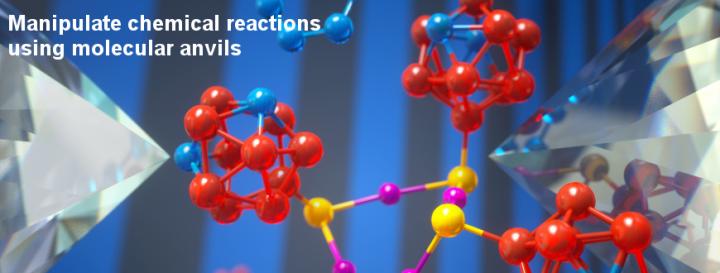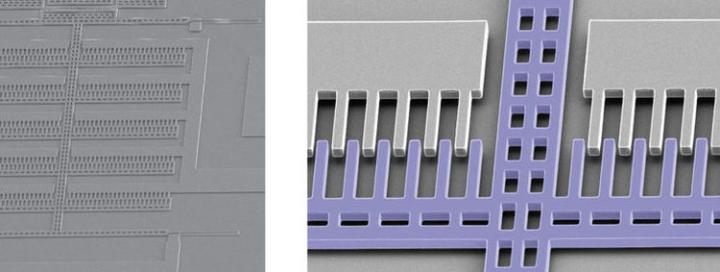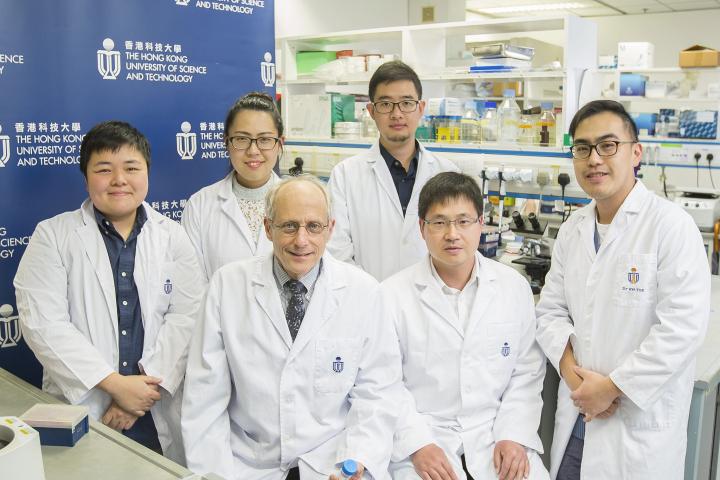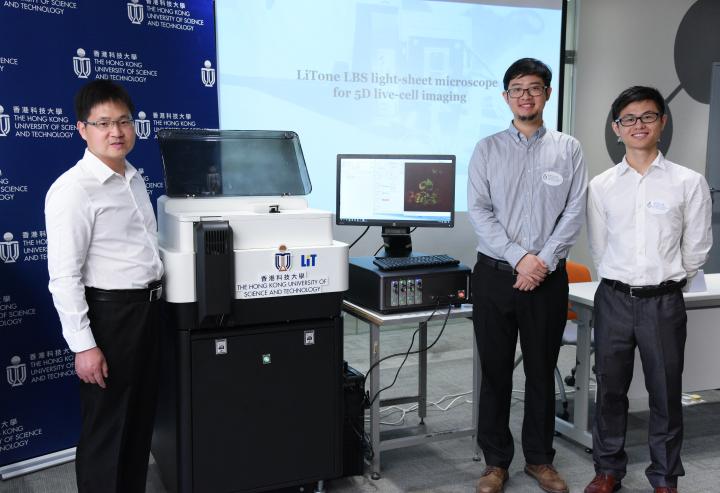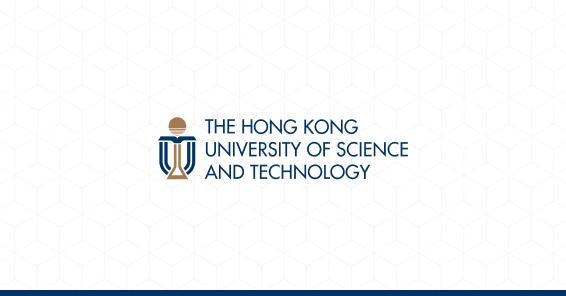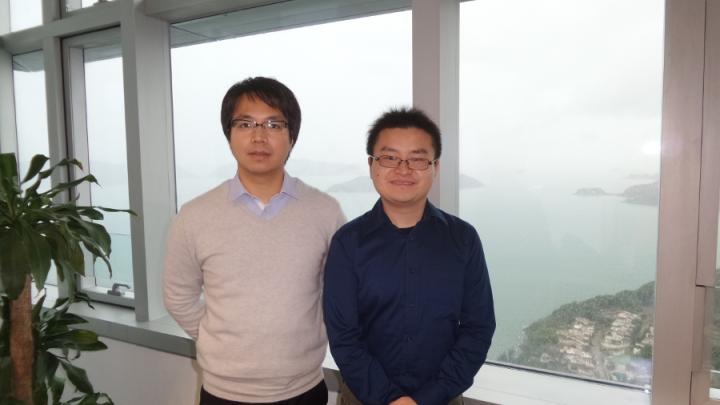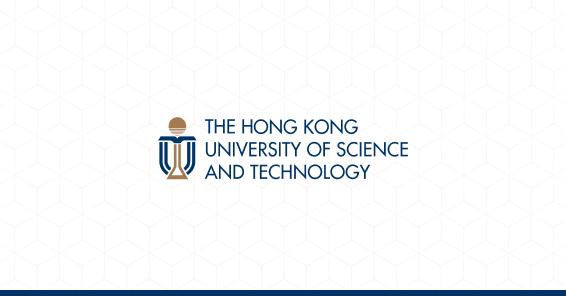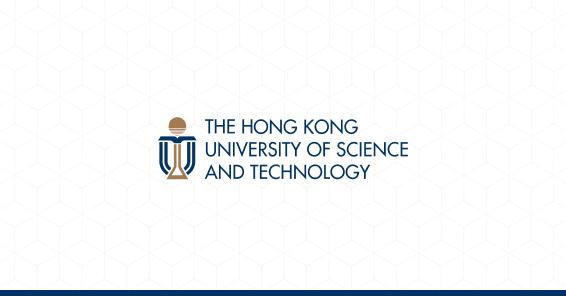News & Events
2018-02-25
A long-term goal for chemists is to find precise, efficient, and sustainable methods to manipulate chemical reactions at the atomic level. The popular methods include heat, light, electricity, and even ultrasound. Recently, another approach arouses great interest: mechanochemistry or mechanical chemistry, which can be viewed as a hybrid between mechanical processing and chemistry. It has several advantages: less energy consumption and also more environmental friendly, because it requires little or even no solvent. In conventional solvent-based synthetic methods, the solvents usually have to be heated and cannot be easily disposed.
In a paper published in Nature on 21 Feb 2018, for the first time, scientists selectively triggered redox reactions and cut chemical bonds by simply using mechanical pressure. They used the smallest diamonds in nature and other super-hard specks to design so called “molecular anvils”, which can squeeze and twist molecules delicately. This method opens new possibilities to synthesize commercial materials and pharmaceuticals, and to conduct energy-intensive reactions for sustainable development, e.g., the reduction of carbon dioxide and nitrogen.
This paper reports a remarkable cooperative effort among 11 laboratories in four countries. The contributor from Hong Kong, China is Prof. Ding Pan, who is a co-first author responsible for computational studies in this work. The computational simulations and modeling provide the mechanisms of mechanically triggered reactions at the atomic scale. The detailed understanding will help scientists to apply the method to other systems.
Link to the paper in Nature: Sterically controlled mechanochemistry under hydrostatic pressure, Hao Yan, Fan Yang, Ding Pan, Yu Lin, J. Nathan Hohman, Diego Solis-Ibarra, Fei Hua Li, Jeremy E. P. Dahl, Robert M. K. Carlson, Boryslav A. Tkachenko, Andrey A. Fokin, Peter R. Schreiner, Giulia Galli, Wendy L. Mao, Zhi-Xun Shen & Nicholas A. Melosh, Nature 554, 505–510 (2018).
The work receives massive media coverage. Some technical ones are listed below:
Nature News and Views: Molecules pressured to react
Phys.org: In a first, tiny diamond anvils trigger chemical reactions by squeezing
C&EN: Pressure squeezes reduction reactions out of crystals
UChicagoNews: Scientists use tiny diamond anvils to put squeeze on materials
Prof. Ding Pan is jointly appointed in the HKUST Department of Physics and Department of Chemistry. He joined the University as a member of the interdisciplinary Sustainability Cluster of appointments. His Angstrom group develops and applies computational and numerical methods from first principles to seek answers to the urgent and fundamental scientific questions relevant to sustainable development, e.g., water science, deep carbon cycle, and clean energy.
(Contributed by Ding Pan; image courtesy of Peter Allen/University of Chicago)
Read more
2018-02-06
A research team led by Prof. Ho Bun Chan, Associate Professor of the Department of Physics at the Hong Kong University of Science and Technology (HKUST), demonstrates experimentally for the first time that the Casimir force can be made to depend non-monotonically on displacement between silicon nanostructures. This finding was published in Nature Photonics in February 2017.
In 1948, Dutch physicist Hendrik Casimir predicted that two electrically neutral, conducting planes attract each other due to the boundary conditions imposed on the quantum fluctuations of the electromagnetic field. This quantum attraction, commonly referred to as the Casimir force, increases rapidly as the distance between the planes decreases. It becomes the dominant interaction between neutral components at the nanoscale. In the last two decades, a series of experiments have verified the existence of this tiny force. The vast majority of the experiments, however, involved simple geometries such as a sphere positioned close to a plate. In these configurations, the attractive Casimir force increases monotonically as the separation is decreased. Recently there have been much efforts in controlling the sign of the Casimir force. In particular, the ability to generate repulsive Casimir forces would open new opportunities in preventing the malfunction of nanomechanical devices due to stiction, which refers to the adhesion of mechanical components upon contact.
Using nanofabrication techniques, Prof. Ho Bun Chan’s research group constructed two silicon components with nanoscale protrusions and measure the Casimir force between them at cryogenic temperatures. As the separation between the components are changed with an on-chip actuator, the slope of the Casimir force is found to reverse sign. In addition, they observed a “Casimir spring” effect, where quantum fluctuations lead to confinement of nanomechanical motion. The findings are in good agreement with calculations from the collaborating theory teams of Prof. C. T. Chan of HKUST and Prof. A. W. Rodriguez of Princeton University. HKUST PG students involved in this work include Lu Tang, Mingkang Wang and Henry Ng. This experiment serves as a first step in exploiting the Casimir force between components of complex geometry in nanomechanical systems.
For more information, please check: https://www.nature.com/articles/nphoton.2016.254
Read more
2016-05-02
The Hong Kong University of Science and Technology (HKUST) is hosting the grand physics competition in Asia – the 17th annual Asian Physics Olympiad (APhO) – for the first time in Hong Kong in the largest scale ever. This is also one of the many activities celebrating HKUST’s 25th Anniversary.
APhO is an annual international physics competition organized for high school students in Asia, modeling after the International Physics Olympiad (IPhO). It aims to advance physics education of young people and strengthen interaction and cooperation amongst Asian physics academics, as well as to train and inspire teenagers who are highly talented in physics. In APhO 2016, each participating Asian country or region sends a team of eight secondary school students to contest in the competition, and Hong Kong is allowed to send two teams of representatives to participate in the competition since it is the host city this year. Contestants will take one theoretical and one experimental examination in which innovative physics questions are set by academics at HKUST.
HKUST is dedicated to nurturing science and technology talents. Over the years, the University has been commissioned by the Hong Kong Academy of Gifted Education (HKAGE) for many times to provide a series of enhancement courses in physics to student contestants who represent Hong Kong to take part in APhO and IPhO – nurturing 73 Gold, Silver and Bronze medalists in the two prestigious physics competitions. This year, about 200 secondary school students from 26 Asian countries and regions will compete in the physics contest – the largest scale since APhO was founded in Indonesia in 2000. APhO 2016 was made possible by the generous donations given by the Innovation and Technology Commission as well as Tin Ka Ping Foundation, among others.
APhO was kick-started today in an opening ceremony officiated by Mrs Fanny Law Fan Chiu-fun, GBS, JP, Patron of APhO 2016; Ms Annie Choi Suk-han, Commissioner for Innovation and Technology of the HKSAR Government; Dr Catherine Chan Ka-ki, Deputy Secretary for Education of the HKSAR Government; Prof Tony F Chan, HKUST President and Honorary Chair of APhO 2016; Prof Leong-Chuan Kwek, President of APhO; Prof Tai-Kai Ng, Executive Director of HKAGE; Prof Ruiqin Zhang, President of the Physical Society of Hong Kong; and Prof Lap-Chee Tsui, President of the Academy of Sciences of Hong Kong.
HKUST President Prof Tony F Chan said, “We are delighted to have the opportunity to welcome a big band of young and talented scientific minds to HKUST for the first ever APhO in Hong Kong. It is especially special that this grand event is one of the highlights of our University’s 25th anniversary celebration programs, as promoting research and education in basic sciences is one of our main missions. I hope this special occasion can showcase Hong Kong as a scientific and technological hub of Asia and nurture stronger enthusiasm for physics amongst pre-university students in the region.”
Prof Michael Wong, Professor of Physics at HKUST and Chair of the 17th APhO Organizing Committee, said, “I hope that by the end of this event, all students will go home gaining broader perspectives on latest developments in physics and making lasting international friendships. It is also my conviction that the APhO experience can have life-changing impacts on many of them.”
Besides, Senior Visiting Fellow of the HKUST Jockey Club Institute for Advanced Study Prof Kam-biu Luk, who received the Breakthrough Prize in 2016 for his measurement of the properties of the mysterious neutrinos, will give two talks titled “Neutrino and Their Properties” and “Fundamental Nature of Matter”.
For more information of APhO 2016, please refer to http://apho2016.ust.hk/index.php.
Read more
2016-01-26
Scientists from HKUST and Harvard-Smithsonian Center for Astrophysics discovered a method to observationally distinguish different theories of how the universe first began at its very early stage. The findings were accepted by the Journal of Cosmology and Astroparticle Physics. The expansion of our current universe has been established for almost a century. However, concerning much earlier stages of our universe as how it began has always been a topic of contention among scientists. The most widely-accepted theory of the primordial universe is cosmic inflation, during which the universe was expanding at an extremely fast and mounting rate. On the other hand, there are also contending theories which believe that our infant stage universe was fast contracting, slowly contracting, static or slowly expanding.
While it is known that the above scenarios of how the early stage universe began all exist, there has not been a clear way to distinguish those scenarios from observations. Without a chronological way to label the primordial stages of the universe, scientists could not know whether the primordial universe was expanding or contracting. Prof Yi Wang, Assistant Professor of HKUST’s Department of Physics and his collaborators Prof Xingang Chen and Mohammad Hossein Namjoo from the Harvard-Smithsonian Center for Astrophysics note that some heavy particles that are known existing at the birth of the universe can be used as standard clocks; and with the time reference set by the clocks, the primordial stages of the universe can be labeled with time and thus the expansion or contraction history of the primordial universe can be reconstructed.
The research paper proposes that the time of every primordial era can be labeled, such that new observations shall be like a movie, which shows in time order how our universe comes from.
“From observing the oscillation of the massive particles, we are able to reconstruct when fluctuations are created in the primordial universe,” says Prof Wang. “Soon, we may be able to verify the evolutionary history towards how our universe was created, which has remained a myth for so long.”
Read more
While it is known that the above scenarios of how the early stage universe began all exist, there has not been a clear way to distinguish those scenarios from observations. Without a chronological way to label the primordial stages of the universe, scientists could not know whether the primordial universe was expanding or contracting. Prof Yi Wang, Assistant Professor of HKUST’s Department of Physics and his collaborators Prof Xingang Chen and Mohammad Hossein Namjoo from the Harvard-Smithsonian Center for Astrophysics note that some heavy particles that are known existing at the birth of the universe can be used as standard clocks; and with the time reference set by the clocks, the primordial stages of the universe can be labeled with time and thus the expansion or contraction history of the primordial universe can be reconstructed.
The research paper proposes that the time of every primordial era can be labeled, such that new observations shall be like a movie, which shows in time order how our universe comes from.
“From observing the oscillation of the massive particles, we are able to reconstruct when fluctuations are created in the primordial universe,” says Prof Wang. “Soon, we may be able to verify the evolutionary history towards how our universe was created, which has remained a myth for so long.”
Read more
2015-12-14
A research team led by Prof Vic Kam Tuen Law, Assistant Professor of the Department of Physics at the Hong Kong University of Science and Technology (HKUST), gave an explanation to the complex phenomenon of superconductivity that survives under strong magnetic field, offering a theoretical answer to an unsolved experimental observation by a group of scientists in the Netherlands. The collective findings were published in Science on 12 November 2015.
Superconductivity is a quantum phenomenon in which electrons form pairs and flow with zero resistance. However, strong enough magnetic field can break electron pairs and destroy superconductivity. When informed by researchers from the Netherlands that superconductivity in thin films of MoS2 could withstand an applied magnetic field as strong as 37 Tesla, Prof Law and his student Mr Noah Yuan came up with an explanation and solved the puzzle.
Prof Law’s team proposed that the lattice structure of MoS2 thin films allows the moving electrons in the material to experience strong internal magnetic fields of about 100 Tesla. This special type of internal magnetic fields, instead of damaging superconductivity, protects the superconducting electron pairs from being destroyed by external magnetic fields. They called this type of superconductors, “Ising superconductors”. They also predicted that many other superconductors, which have similar lattice structure as MoS2, would fall into the same family of “Ising superconductors” as well.
Prof Law’s team also pointed out that Ising superconductors can be used to create a new type of particles called Majorana fermions which would have potential applications in making quantum computers. “Many novel properties and applications of Ising superconductors have yet to be discovered,” Prof Law said. “Now that we understand the mechanism of how certain materials become resistant to interference from external magnetic fields, we can look for materials with similar characteristics to those of superconducting MoS2.” Indeed, in collaboration with experimentalists from Penn State University, Prof Law and collaborators found that a monolayer of NbSe2 is also an Ising superconductor. This work was also published in Nature Physics in November.
Prof Law joined the Department of Physics at HKUST in 2011. He graduated from HKUST in 2003, and received his PhD degree from Brown University in 2008, where he was awarded the Anthony Houghton Award for Theoretical Physics. He was the first joint postdoctoral fellow of HKUST Jockey Club Institute for Advanced Study and Massachusetts Institute of Technology (MIT) in 2008 and became the Croucher Postdoctoral Fellow at MIT in 2009-2011. He was awarded the School of Science Research Award of HKUST in 2014 and the prestigious Croucher Innovation Award 2015 by the Croucher Foundation.
Read more
2015-09-16
The Hong Kong University of Science and Technology (HKUST) hosted the first talk of its 25th Anniversary Distinguished Speakers Series yesterday, featuring Prof Steven Chu, Nobel Laureate in Physics in 1997 and former US Secretary of Energy. The event was well received by students, faculty members and guests from HKUST.
Speaking on “Energy, Climate Change and the Transition to a Sustainable World”, Prof Chu warned of the impact of climate change on our generations to come. Backing up with statistics and lively examples, he talked about how renewable energy could provide sufficient energy to a greater population. In order to make the most out of it, Prof Chu noted, a very flexible transmission and distribution system will be required, and that adaptation costs will go down as more parts of the world get used to renewable energy. “Climate of the earth is indeed changing, and we have very compelling evidence that said it is largely caused by greenhouse gases by humans,” Prof Chu said as he reinstated the need for cleaner energy. An established physicist and a champion in clean energy, Prof Chu co-won the Nobel Prize in Physics in 1997 for a method to cool and trap atoms along with his colleagues Claude Cohen-Tannoudji and William Daniel Philips. He joined US President Barack Obama’s administration as the nation’s Secretary of Energy in 2009, during his tenure he oversaw a tenfold increase in solar energy use and an overall doubling in the use of renewable energy, leading to a cut in fossil fuel consumption. Prof Chu had recruited outstanding scientists and engineers into the Department of Energy, he also began several initiatives including ARPA-E (Advanced Research Projects Agency – Energy), the Energy Innovation Hubs and the U.S. – China Clean Energy Research Centers (CERC). After leaving the public office in 2013, Prof Chu returned to Stanford University and lead researchers in developing accurate, informative and broadly applicable tools for biophysics and biomedicine. Prof Chu is among five other Nobel Prize winners, corporate leaders, entrepreneurs and key financial policy shapers invited to speak for the Series that marks HKUST’s 25th anniversary. Other confirmed speakers include Wang Shi, Founder and Chairman of leading property developer China Vanke, winner of Nobel Prize in Chemistry in 2011 Prof Dan Shechtman, and Dr Raghuram Govind Rajan, Governor of the Reserve Bank of India. Jean-Pascal Tricoire, Chairman and Chief Executive Officer of Schneider Electric, will be the next speaker for the Series, and he will talk about the new energy world on September 23, 2015. More talks by other distinguished speakers are also being lined up. Read more
Speaking on “Energy, Climate Change and the Transition to a Sustainable World”, Prof Chu warned of the impact of climate change on our generations to come. Backing up with statistics and lively examples, he talked about how renewable energy could provide sufficient energy to a greater population. In order to make the most out of it, Prof Chu noted, a very flexible transmission and distribution system will be required, and that adaptation costs will go down as more parts of the world get used to renewable energy. “Climate of the earth is indeed changing, and we have very compelling evidence that said it is largely caused by greenhouse gases by humans,” Prof Chu said as he reinstated the need for cleaner energy. An established physicist and a champion in clean energy, Prof Chu co-won the Nobel Prize in Physics in 1997 for a method to cool and trap atoms along with his colleagues Claude Cohen-Tannoudji and William Daniel Philips. He joined US President Barack Obama’s administration as the nation’s Secretary of Energy in 2009, during his tenure he oversaw a tenfold increase in solar energy use and an overall doubling in the use of renewable energy, leading to a cut in fossil fuel consumption. Prof Chu had recruited outstanding scientists and engineers into the Department of Energy, he also began several initiatives including ARPA-E (Advanced Research Projects Agency – Energy), the Energy Innovation Hubs and the U.S. – China Clean Energy Research Centers (CERC). After leaving the public office in 2013, Prof Chu returned to Stanford University and lead researchers in developing accurate, informative and broadly applicable tools for biophysics and biomedicine. Prof Chu is among five other Nobel Prize winners, corporate leaders, entrepreneurs and key financial policy shapers invited to speak for the Series that marks HKUST’s 25th anniversary. Other confirmed speakers include Wang Shi, Founder and Chairman of leading property developer China Vanke, winner of Nobel Prize in Chemistry in 2011 Prof Dan Shechtman, and Dr Raghuram Govind Rajan, Governor of the Reserve Bank of India. Jean-Pascal Tricoire, Chairman and Chief Executive Officer of Schneider Electric, will be the next speaker for the Series, and he will talk about the new energy world on September 23, 2015. More talks by other distinguished speakers are also being lined up. Read more
2014-11-19
A research team at the Hong Kong University of Science and Technology (HKUST), led by Prof Shengwang Du, Associate Professor of Department of Physics, succeeded in controlling photon’s shape, and reached a record photon loading efficiency of 87% into a cavity. The scientific breakthrough can be used to build nodes of a quantum network based on cavity quantum electrodynamics (CQED) and will help advance the development of quantum communication. The research findings were published recently in Physical Review Letters, one of the most prestigious journals in physics.
Half of the 2012 Nobel Prize in physics was awarded to Serge Haroche for his work on CQED. A CQED-based quantum network might consist of flying photonic quantum bits, captured by cavity nodes that perform computations and send information. However, it is not easy to catch and hold a single photon in a cavity. When a photon is injected into a cavity, it can be reflected or transmitted. In previous experiments, reflection and transmission limited the photon loading efficiency to below 20%.
Prof Du and his team exploit the wave-particle nature of a single photon in a cavity between two mirrors—a perfectly reflecting one and an input or output mirror. Using an electro-optical modulator, they shape a photon wave function that, after each round trip in the cavity, interferes destructively with the reflected wave packet. This eliminates most reflections from the cavity while the photon is injected into the cavity.
Prof Du explained that they apply a “heralded” scheme, where a laser-cooled rubidium-atom cloud emits entangled photon pairs, and the detection of one photon heralds the presence of the other one being sent into the cavity. With an optimal exponential-growth photon waveform prepared by the modulator, Prof Du’s team demonstrates a record loading efficiency of 87%, which could advance the development of transmission of quantum information.
Prof Shengwang Du joined HKUST in 2008 and received the School of Science Research Award of HKUST in 2011. He graduated from Nanjing University and obtained a master’s degree in Physics from Peking University. He also received a master’s degree in Electrical Engineering and a PhD in Physics from the University of Colorado at Boulder. He was a Postdoctoral Scholar at Stanford University before joining HKUST.
Read more
